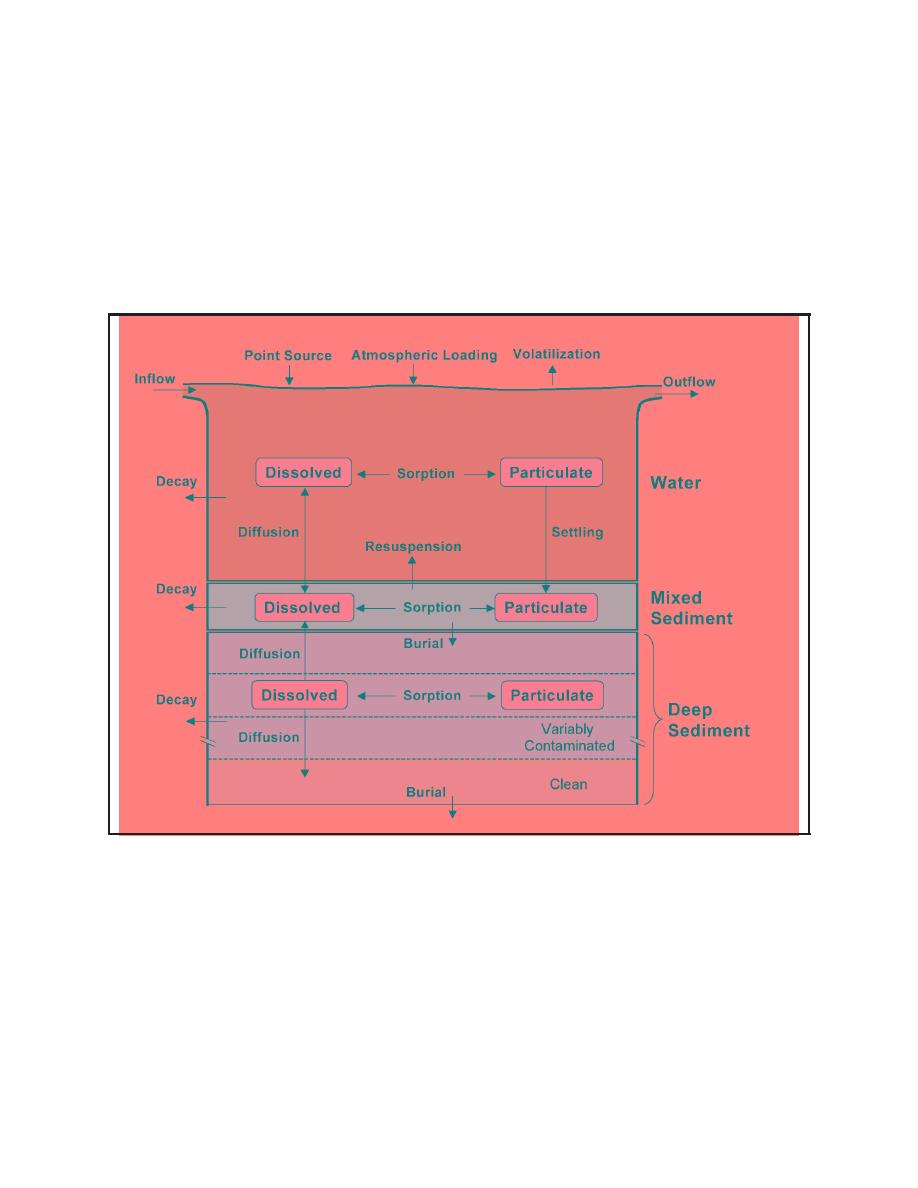 |
||
|
|
||
|
Page Title:
Figure 4. Schematic of RECOVERY processes |
||
| |||||||||||||||
|
|
 ERDC TN-DOER-R2
December 2001
a long time, creating layers of varying contamination. The specification of a mixed surface layer
is included because an unconsolidated layer is often observed at the surface of sediments due to a
number of processes, including currents, bioturbation, and mechanical mixing.
Processes incorporated in RECOVERY are volatilization, sorption, decay, burial, resuspension,
settling, advection, and pore-water diffusion. RECOVERY accounts for bioturbation with a
completely mixed layer where the concentration is uniform with depth and an enhanced molecular
diffusion zone to mimic bore tube pumping. Figure 4 shows the processes included in RECOVERY.
The model can account for loads associated with point discharges, atmospheric loadings, and inflow.
Figure 4. Schematic of RECOVERY processes
model, is commonly used to evaluate dredged sediments for open-water disposal. The TBP model
estimates the steady-state concentration of a neutral organic chemical that would ultimately
accumulate in an organism from continuous exposure to contaminated sediment. TBP is calculated
from chemical concentration and organic carbon content of the sediment, lipid content of the target
organism, and the relative affinity of the chemical for sediment organic carbon and animal lipid
(Figure 5). TBP is an estimate of the maximum bioaccumulation of contaminants in aquatic
organisms. Bioaccumulation is a measure used to predict exposure effects for characterizing
ecological risk.
5
|
|
Privacy Statement - Press Release - Copyright Information. - Contact Us - Support Integrated Publishing |